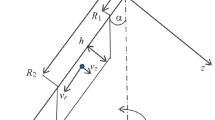Abstract
Suspensions of isolated cells were obtained from livers of normal rats and rats treated with the hepatocarcinogen N,N-dimethyl-4-aminoazobenzene. Differential centrifugation of dispersed cells yielded a large parenchymal cell fraction and a small non-parencymal cell fraction. By means of rate sedimentation through different concnetrations of Ficoll, parenchymal cells were separated into cells with fast, intermediate and slow rates of sedimentation. Periods of sedimentation were brief and centrifugal forces low in order to retain the best possible state of preservation of cells. DNA, RNA and protein contents, acid phosphatase activity, cell size and nucleocytoplasmic ratios of parenchymal cells sedimenting at fast, intermediate and slow rates were measured. Cell fractions from normal livers had properties suggesting that faster sedimenting cells were derived from the centre and middle of the lobule whereas slowly sedimenting cells were periportal; however, much of the periportal cell population remained in a residue of undissociated tissue. Compared with normal cells, carcinogen treated cells appeared to fractionate according to different physical and chemical criteria and could not be related to their origin within the liver lobule. They were smaller, slower sedimenting, lower in protein and RNA content and acid phosphatase activity. The tissue residue contained abnromal histological structures.
Similar content being viewed by others
Rights and permissions
About this article
Cite this article
Horsfall, A., Ketterer, B. The fractionation of isolated liver cells from normal and carcinogen treated rats. Br J Cancer 33, 96–104 (1976). https://doi.org/10.1038/bjc.1976.10
Issue Date:
DOI: https://doi.org/10.1038/bjc.1976.10
- Springer Nature Limited



